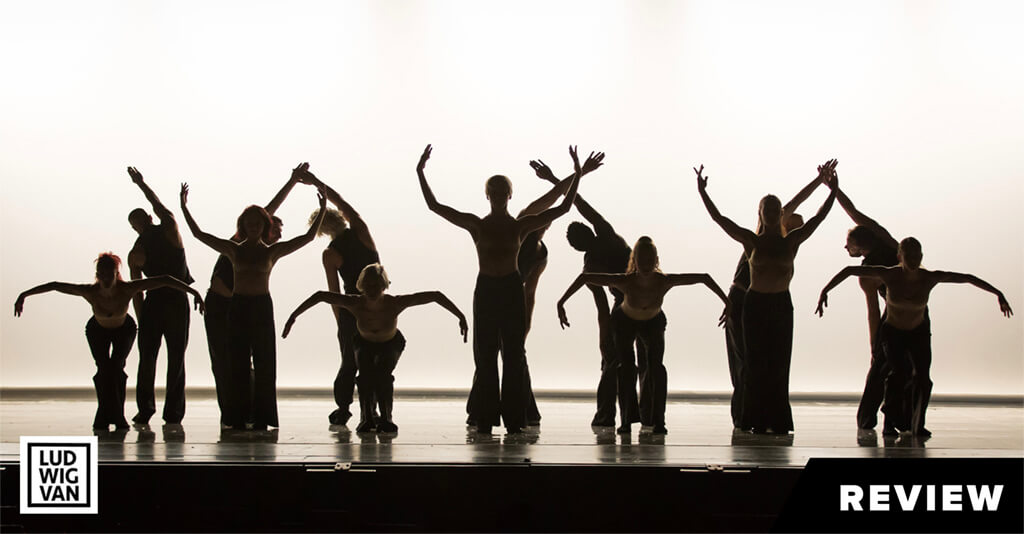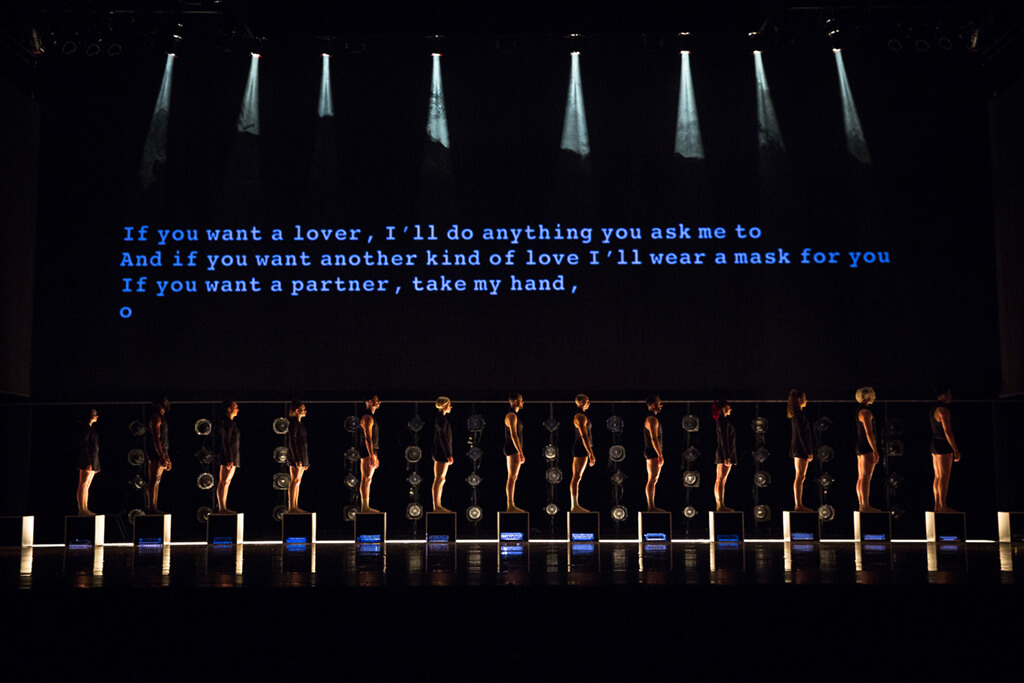
Sony Centre & BJM, Ballets Jazz Montréal/Leonard Cohen’s Dance Me, choreographed by Adonis Foniadakis, Annabelle Lopez Ochoa and Ihsan Rustem, directed by Eric Jean, Sony Centre, Mar. 1 and 2.
There is a trend among dance companies to take famous songbooks and put movement to them. That way the singer or the band is a draw to a larger audience, and, more to the point, becomes a key to the touring market. They are usually cliché productions.
That is why BJM’s Leonard Cohen’s Dance Me is such a wonderful surprise. It is not the usual song parade with the lyrics acted out, or an attempt to gerrymander a thin storyline onto the songs. Rather, Dance Me is a very sophisticated response to Cohen’s melancholy worldview. With songs ranging from 1967 to 2016, the piece is an epic look at the human condition, starting with the theme of love and loss, moving through more philosophical meditations, and ending with darker visions and cautionary tales.
The piece premiered in 2017 as part of Montreal’s 375-anniversary celebrations — and what could be more fitting for the occasion than the jointure between the city’s most famous songwriter/poet and an acclaimed local dance company. BJM artistic director, Louis Robitaille, explained in many interviews, that to get Cohen’s permission to use his songs and poetry, the piece had to be about the music and not Cohen’s private life, and that it should be more than a string of old hits.
The great Montreal man of theatre, Eric Jean, is listed as dramaturge and stage director, and he has fashioned a compendium of songs, audio clips of Cohen’s voice from live concerts, and spoken poetry. The songs, of course, are in a very specific order. In fact, two of the dancers actually sing. Not surprisingly, there is another dancer who comes and goes, representing the legendary Cohen figure in raincoat and fedora. There are also complex choreographed connectors, performed to drone-like electronica, to bridge the song selections. Gilding the lily is the evocative video design from the famous HUB Studio. Nothing is concrete about this show. It is an homage to the abstract. The creators are not telling or showing. They want the audience to react, to feel.
Dance Me has European sensibility written all over it. The three choreographers — Andonis Foniadakis, Annabelle Lopez Ochoa and Ihsan Rustem — are all European trained, and it is in Europe where they launched their careers as dancers and choreographers. I define European sensibility as choreography that is more cerebral than linear, more about ideas than narrative, and more conceptual than readily discernible. You would think that three different choreographers would each leave his or her own mark, but Dance Me feels like a whole cloth, which adds to its greatness.

Even when the piece comes close to enacting the lyrics, the choreography is wonderfully imaginative. For example, in Suzanne, which is performed as a duet, the man never lets the woman touch the floor. All the partnering is midair or overhead, so the woman seems to be floating. Similarly, Dance Me to the End of Love features one man centre stage who executes a series of quick, passionate duets as the women of the company keep running at him in succession. Later songs from Cohen’s last album, You Want It Darker, speak of war and mortality, and are depicted in patterns with metal poles as instruments of combat.
For the most part, the choreography is a jumble of bodies, limbs entangled, depicting a messy world where humans interact together, whether in love or hate. There are elements of humour, however. Tower of Song, Cohen’s tirade against the music industry, features a plethora of bright red lips mouthing the lyrics. There is even a battery of typewriters tapping out the grovelling lyrics of I’m Your Man. Happily, director Jean did not allow for a raw-raw ending. The piece finishes quietly, the cast kneeling, as the Cohen figure recites the words to the poem A Thousand Kisses Deep.
Everything about this show is a class act. The speed and risk of the choreography. The brilliant athleticism of the fourteen dancers. The clever black and white motif of the scenography, lighting and costumes. But most of all, it is the freshness of the music. We do not hear Cohen sing. Rather, the score features a host of voices, both male and female, played over a compelling acoustic guitar and small ensemble. Alexis Dumais is credited with the music conception, and Martin Léon with music direction. I’d like to know who did the marvellous arrangements and who the singers are, but that information is not in the program.
Leonard Cohen’s Dance Me is clever, oblique, and experiential. It washes over you like a shower of song and thought. It belongs in the pantheon of Canadian dance treasures.
LUDWIG VAN TORONTO
Want more updates on Toronto-centric classical music news and reviews? Follow us on Facebook or Twitter for all the latest.
- INTERVIEW | Actor Diego Matamoros Takes On Icon Walt Disney In Soulpepper Production Of Hnath Play - April 16, 2024
- SCRUTINY | Opera In Concert Shine A Light On Verdi’s Seldom Heard La Battaglia Di Legnano - April 9, 2024
- SCRUTINY | Lepage & Côté’s Hamlet Dazzles With Dance And Stagecraft Without Saying Anything New - April 5, 2024



